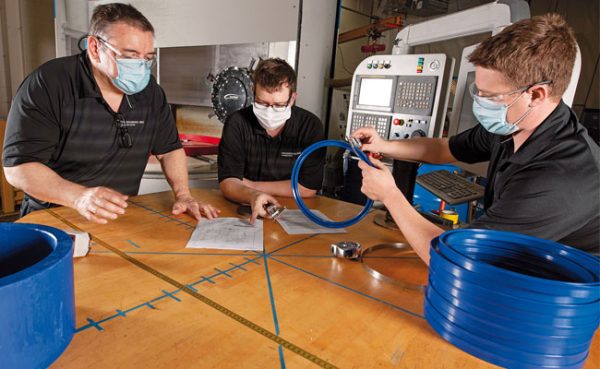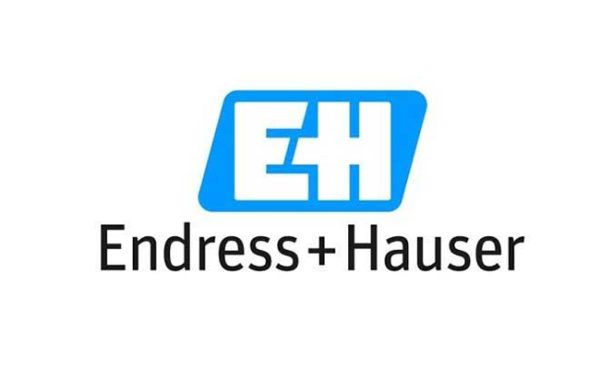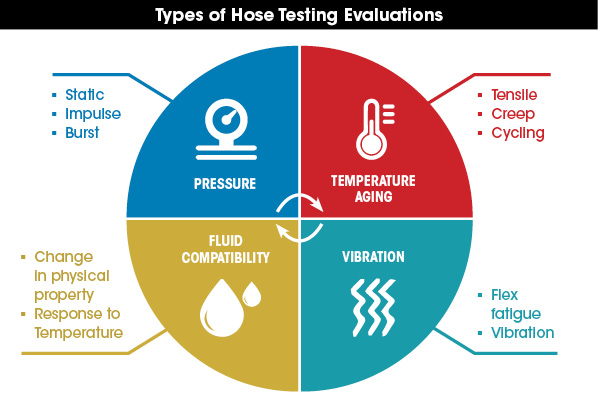Report: Labor, Supply, Security Among Manufacturers’ Top Concerns in ‘22

By Michael Degan, Fluid Power Journal Editor
The labor shortage, supply chain troubles, and cybersecurity are among the top challenges facing manufacturers this year, according to a new report from the National Association of Manufacturers.
NAM released its report, Top 8 Manufacturing Trends for 2022, in January. Other challenges the report cites are digital transformation, culture, mergers and acquisitions, disruption, and opportunity.
It should come as no surprise that the top two problems manufacturers face right now are labor and the supply chain, numbers one and two on NAM’s list.
Labor
The labor shortage stems not just from difficulties hiring workers but also from people quitting their jobs.
“2021 saw the beginning of the Great Resignation, with record numbers of workers leaving their jobs,” the report noted. “Experts anticipate the labor shortage will continue well beyond 2022, resulting in an estimated 2.1 million unfilled manufacturing jobs by the year 2030,” it said, citing a study by Deloitte and the Manufacturing Institute.
“Some good news,” the report said, “is that diversity, equity, and inclusion efforts are helping to attract larger numbers of women and diverse workers to the industry. And forward-thinking businesses are taking advantage of the opportunity to revamp employee benefits and truly differentiate themselves.”
The report’s suggestions for solving the labor shortage include:
- “Rely on a combined strategy of policy, on-the-ground programs, technology, innovation and grit to build and maintain a sufficient workforce.
- Implement advanced manufacturing technologies to increase operational efficiencies and meet production goals with fewer personnel.
- Develop programs to upskill and cross-train your existing workforce.”
Supply chain
Related to the labor shortage is the second trend in NAM’s report – supply chain delays of raw materials and other essential goods that manufacturers need to do business.
“Current supply chain bottlenecks may be caused by several factors,” the report said. “Ongoing pandemic-related disruptions, strong demand, the labor shortage, logistics challenges, and transportation issues. As a result, costs and lead times are increasing, and manufacturers are struggling to acquire products and raw materials to meet production capacity. These issues are expected to continue into at least the first half of 2022.”
NAM’s suggested solution include:
- “Expand your supplier pool and/or find suppliers closer to your facility to minimize some issues and avoid others altogether.
- Work with allies and partners across the globe to ensure an effective and efficient supply chain.
- Connect with more potential customers in the U.S. who need what you produce.”
Cybersecurity
NAM cited cybersecurity as a major concern for manufacturers, which may face challenges that other businesses don’t, especially concerning ransomware attacks.
“Cyber incidents will continue to rise in 2022,” the report said, “and manufacturing companies are at elevated risk due to the use of IT and OT systems. Potential cyber incidents include ransomware attacks, which have increased in frequency and cost, email fraud, hacking, and more.”
NAM’s suggested solutions include:
- “Understand that in addition to financial damage, cyberattacks cause safety hazards, loss of reputation, damage to customer relationships, and more.
- Expect cyber insurance premiums to rise as much as 25% due to increasing frequency and severity of attacks, but also understand the high cost of an attack. Consider cyber insurance a ‘must-have’ to protect and mitigate against full impact of an attack on a manufacturer.
- Enlist the help of professionals to identify vulnerabilities in your network and take steps to close any gaps.”
Other trends
Another trend for manufacturers to navigate is digital transformation.
“The Manufacturing 4.0 Revolution is well underway,” the report said. “Digital transformation is not optional; it is imperative to the ongoing success and competitiveness of U.S. manufacturing.
Manufacturers that want to succeed must understand that M4.0 is as much about people as it is about smart technology.”
“Alleviate some supply chain challenges,” the report advised, “with solutions such as digital twins and digital threads.”
The report’s number six trend is culture, which encompasses diversity, inclusion, and women in leadership.
“Continuing to enhance your company culture in 2022 isn’t just the right thing to do,” the report said, “it has major potential to drive innovation and business growth in manufacturing. An inclusive workplace with a positive culture can alleviate workforce shortages, improve financial performance, boost resilience, achieve breakthroughs, and more.”
“Ensure women have equal access to leadership roles, pay equity, and opportunities for advancement,” the report advised. “Consider untapped talent pools to meet your workforce needs, such as the formerly incarcerated.”
“Prioritize environmental sustainability and social responsibility to attract a younger workforce while improving your community,” the report said.
For a trend related to mergers and acquisitions, the report advised: “If selling, bolster your bottom line by examining profit margins across the customer base. If buying, identify tax credits and other incentives that may be available for expansion, training, land, or new equipment.”
Under a trend called Opportunity, the report advised manufacturers to “Explore incentives and tax credits to claim your share of $80 billion in government incentives available to businesses in the U.S. every year. Understand new manufacturing technologies and their potential to help your business become more responsive, adaptive, agile, and competitive.”
In a trend called Leadership Through Disruption, the report urged manufacturers to “focus on overcoming today’s obstacles while still making strategic decisions for the future.”
“New technologies have the potential to increase resilience, innovation, efficiency, competitiveness, and more,” the report said. “Yet leaders must also give attention to people – to allaying their health and safety concerns, enhancing company culture, and preparing workers for a digital future.”
Download the full report here: http://documents.nam.org/MBS/MBS_2022_Trends.pdf







